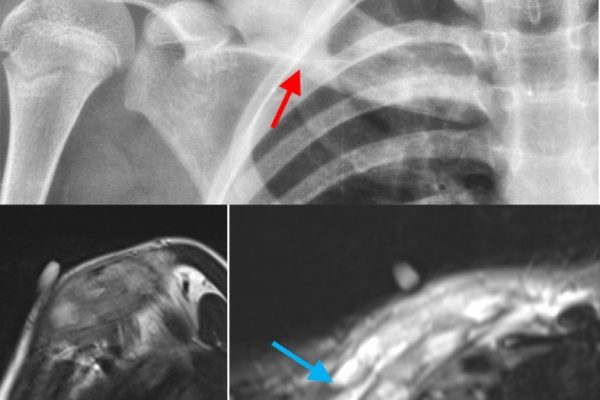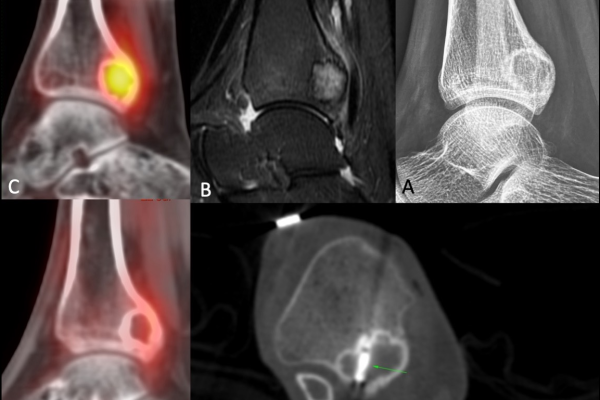How CT Scans Aid in Diagnosing Abdominal Disorders
For doctors and healthcare professionals alike, the precision offered by CT scan services has changed how many abdominal diseases are diagnosed. CT scans form the core of patient management decision-making, from organ injury identification to tumour detection.
In this blog, we explore how CT scans contribute to accurately diagnosing abdominal disorders, their advantages over other imaging techniques, and practical considerations such as cost and accessibility.
Understanding CT Scans and How They Work
A CT scan combines a series of X-ray images taken from different angles around the body and uses computer processing to create cross-sectional views. This offers a more comprehensive picture than traditional X-rays, especially in areas like the abdomen, where multiple organs and structures are involved.
CT technology continuously advances, with options like high-resolution scans and 3D reconstructions enhancing diagnostic capabilities. This makes CT scan vital in modern-day abdominal imaging.
Common Abdominal Disorders Diagnosed Using CT Scans
There are numerous abdominal conditions for which CT scans are invaluable. Some of the most common include:
1. Appendicitis
One of the leading causes of emergency abdominal surgery, appendicitis, can be difficult to diagnose through symptoms alone. CT scans provide a clear view of the inflamed appendix and surrounding tissues, enabling prompt diagnosis and treatment.
2. Kidney Stones
CT scans can detect even the most petite kidney stones and help determine their size, location, and impact on surrounding structures. This aids in selecting the most effective treatment approach.
3. Abdominal Tumours
Whether benign or malignant, tumours in the liver, pancreas, kidneys, or other abdominal organs can be visualised in detail using CT scans. The imaging helps understand the size, shape, and extent of growth.
4. Liver Disease
CT scans can monitor conditions such as fatty liver, cirrhosis, or liver cancer by offering an account of the progression of the disease and how it affects the organ.
5. Infections and Abscesses
A CT scan clearly shows infections deep within the abdomen, including abscesses. This allows for accurate localisation and timely medical or surgical intervention.
6. Abdominal Aortic Aneurysm
This life-threatening condition can be detected early with CT imaging, which visualises the dilated aorta and helps assess the risk of rupture.
Benefits of CT Scans in Abdominal Diagnostics
1. High Accuracy and Speed
One of the main reasons why CT scan services are widely recommended is the combination of accuracy and speed. In emergency settings, a rapid diagnosis can make all the difference, especially in cases like internal bleeding or bowel obstruction.
2. Detailed Visualisation
CT scans offer highly detailed imaging, distinguishing between different tissue types. This is especially useful in detecting cysts, solid masses, and inflammatory changes.
3. Guidance for Procedures
CT scans often guide medical procedures such as biopsies, drainages, and surgeries. The detailed imagery ensures precision in targeting affected areas.
4. Non-Invasive
CT scans are a noninvasive diagnostic tool that offers a painless way to investigate the abdominal region without requiring exploratory surgery.
The Role of CT Scan Services in Patient Care
New CT scan units typically incorporate newer technologies like contrast imaging, 3D reconstructions, and digital storage of images for comparison in the future. These services diagnose abdominal diseases, monitor chronic diseases, and follow up after surgery.
Choosing a suitable diagnostic centre for a CT scan is essential to delivering the best output. The Quality of equipment, skill of technicians, and timely reporting are the deciding factors in providing an accurate diagnosis.
3D CT Scans and Advanced Imaging
With the advent of 3D imaging, CT scans now offer even more nuanced visualisations. These 3D reconstructions are particularly beneficial when dealing with complex anatomical structures or planning surgical procedures. While there might be a difference in the 3D CT scan price compared to standard imaging, the added detail often justifies the cost, especially in complicated cases.
Cost Considerations and Accessibility
One common concern among patients is the affordability of diagnostic imaging. For instance, the CT scan cost in Mumbai can vary depending on the type of scan, whether contrast dye is used, and the specific diagnostic centre. Nonetheless, with the increased availability of advanced imaging centres across urban and semi-urban areas, CT scans have become more accessible to the general public.
Patients should always consult with their healthcare provider to understand which type of scan is necessary and explore any insurance coverage or government health scheme support that may apply.
Preparing for a CT Scan: What Patients Should Know
Before undergoing a CT scan, there are a few preparatory steps a patient might be advised to take:
- Fasting: If a contrast dye is used, patients may need to fast for a few hours before the procedure.
- Hydration: Staying well-hydrated can help the body eliminate the contrast dye after the scan.
- Avoiding Metal: Patients should remove metallic items that might interfere with imaging.
- Medical History: Informing the radiologist about allergies, especially to iodine-based contrast, is crucial.
The scan itself is painless and typically lasts 10 to 30 minutes, depending on the complexity of the condition being investigated.
Limitations and Considerations
While CT scan offers tremendous advantages, it’s important to acknowledge their limitations:
- Contrast Reactions: Some patients may react to the contrast dye, although this is rare and usually manageable.
- False Positives/Negatives: No imaging test is 100% foolproof; therefore, CT findings are often corroborated with other diagnostic methods or clinical evaluation.
Future Outlook of CT Imaging
With continuous innovations, the future of CT imaging looks promising. Artificial intelligence and machine learning are integrated into diagnostic radiology, allowing quicker interpretation and pattern recognition.
In abdominal diagnostics, the continued evolution of CT scan services ensures that patients receive the best possible care through early detection, accurate diagnosis, and personalised treatment plans.
Conclusion
CT scans have transformed doctors’ diagnoses of abdominal disease. Their ability to provide fast, precise, and noninvasive imaging makes them indispensable to modern diagnostics. Whether they are ruling out life-threatening diseases like appendicitis or helping surgeons navigate complex operations, CT scan services cannot be substituted.
By choosing an appropriate CT scan diagnostic centre, being aware of the cost incurred for a CT scan in Mumbai, and considering the benefits of high-quality imaging like 3D scans, even at the expense of 3D CT scans, patients can make informed choices about their health. In a world where an early diagnosis is everything, CT scans provide clarity in more than one sense—literally and figuratively.



